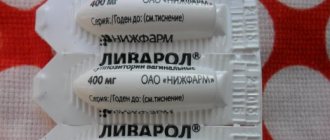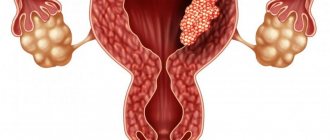What is vulvovaginitis
Vulvovaginitis is an inflammatory disease that affects the mucous membranes of the external genitalia (vulva) and vagina (vagina).
It can occur at any age. There are frequent cases when vulvovaginitis develops in children, which requires immediate identification and proper treatment. But this disease mainly affects women of reproductive age. Vulvovaginitis mainly develops under the influence of mixed flora: staphylococci, E. coli, gonococci, streptococci, Candida fungi, Protea. Vulvovaginitis in girls can develop due to helminthiasis.
Vulvovaginitis, as a rule, affects girls and women of elderly and senile age. The prevalence of vulvovaginitis among girls is due to the fact that in childhood, during the period of hormonal rest, the local immune defense of the vagina is significantly weakened (thin skin, insufficient acidity of the vagina, hypofunction of the sebaceous and sweat glands).
Photo
Causes of the disease
The main etiological factor is microorganisms that enter the external genitalia and penetrate the vagina. When the state of local immune defense is favorable for them, they multiply, as a result of which clinical symptoms appear.
The main causes of the disease are as follows:
- bacteria;
Trichomonas can cause specific vulvovaginitis
- mushrooms;
- viruses;
- helminths;
- specific microbial agents.
If the body of women or girls is affected by bacteria, it is usually E. coli, staphylococcus or streptococcus. Bacterial vulvovaginitis occurs, which is nonspecific.
There is a special flora that causes an inflammatory process much less often than usual bacterial flora. When affected by the infectious agents listed below, specific vulvovaginitis occurs. Such pathogens include:
- tuberculosis bacillus;
- Trichomonas;
Treponema pallidum may be the causative agent of vulvovaginitis in some cases.
- gonococcus;
- treponema pallidum;
- papillomavirus;
- candida;
- Corynebacterium diphtheria.
Infection with this flora requires special conditions that very sharply reduce local immunity. In addition, the specific source of infection is important, since the mechanism of pathogen invasion is exclusively contact. According to the microbe, the disease gets its name: trichomonas, tuberculous or candidal vulvovaginitis.
In older women, involutional and atrophic causes in the vaginal mucosa play a role in the development of the painful condition. A nonspecific infection is added to this background. In such women, the disease is called atrophic vulvovaginitis.
Violations of personal hygiene rules lead to the development of vuvovaginitis
There are conditions that facilitate the penetration of pathogens into the genitals. These are predisposing factors, which include:
- violation of personal hygiene;
- rare change of panties for girls;
- diaper rash;
- perineal injuries;
- pathology of the rectal area;
- skin diseases affecting the external genitalia.
For specific pathogens, indiscriminate change of sexual partners, diabetes mellitus, as well as diseases affecting the immune system, such as AIDS, play a role.
With diabetes, the likelihood of developing vulvovaginitis increases
Symptoms of vulvovaginitis
Depending on the type of vulvovaginitis, the disease can either clearly manifest itself with specific symptoms or be generally asymptomatic.
The most characteristic symptoms of vulvovaginitis are as follows:
- itching and burning;
- swelling of the vulva and vagina;
- pathological discharge from the genital tract;
- unpleasant odor from the genitals;
- hyperemia of the labia and vaginal walls
- ; pain in the lower abdomen, vagina, vestibule and lower back.
The color, consistency and smell of the discharge directly depend on the type of pathogen that contributed to the development of vulvovaginitis.
Symptoms of the disease
Against the background of the onset of pathology, the patient will most likely have the following complaints:
- The appearance of burning and itching in the genital area.
- Observation of pathological vaginal discharge. Such discharge may be yellow, green, brown or curdled.
This disease is very often accompanied by various discharges. If the disease was caused by bacteria, the vaginal secretion will be very thick, heterogeneous and purulent. Against the background of vulvovaginitis caused by Trichomonas, the discharge will be purulent and foamy in nature with an extremely unpleasant and fetid odor. Fungal infections are characterized by discharge with a cheesy consistency. Treatment of vulvovaginal candidiasis will also be presented.
During the examination, the doctor usually pays attention to the following signs:
- The presence of swelling and redness of the mucous membrane. Such a change may affect the labia, the area of the vaginal vestibule, and also the vaginal walls.
- The occurrence of erosion. This symptom is characteristic of the herpetic and diphtheria type of vulvovaginitis.
- The presence of bubbles filled with a clear liquid inside. This symptom is especially characteristic of herpes.
- The presence of synechiae between the labia minora. This symptom often appears among younger girls. The cause is the presence of chronic vulvovaginitis. It must be treated without fail.
Acute vulvovaginitis can manifest itself with general symptoms, especially for girls who are in preschool age. Against this background, the child may become capricious, extremely whiny and will get tired very quickly. If the patient is already sexually active, she will experience symptoms in the form of decreased sexual desire, and in addition, there will be pain during sexual intercourse.
Treatment of vulvovaginitis
Treatment of vulvovaginitis is carried out on an outpatient basis. In the acute phase of the disease, the patient must remain in bed. Treatment, as a rule, is prescribed comprehensively, which includes, in addition to taking medications, washing the external genitalia with antiseptic solutions 2-3 times a day.
If tests reveal specific vulvovaginitis, simultaneous treatment of the sexual partner is required to prevent re-infection. The selection of medications is carried out by a doctor based on the sensitivity of the pathogen to antibiotic drugs identified during culture.
Medicines should be used only as prescribed by a doctor, and the course of treatment should be carried out under his close supervision. Depending on the severity of the disease, antibacterial drugs can be prescribed both in the form of tablets or injections, and for topical use, in the form of creams, ointments, suppositories, and douching solutions.
Antibacterial drugs
- Ketoconazole;
- Aminitrazole;
- Clindamycin;
- Miramistin;
- Metronidazole;
- Nifurtel;
- Polygynax;
- Povidone-iodine;
- Polycresulene;
- Ciclopirox;
- Chamomile preparations.
When treating vulvovaginitis, it is necessary to pay attention to possible concomitant diseases that may reduce the effectiveness of therapy:
- diabetes;
- hormonal changes;
- obesity;
- infections.
During menopause, the development of nonspecific vulvovaginitis can be caused by a decrease in estrogen levels. In this case, hormone replacement therapy must be used. In diabetes mellitus, blood sugar levels are monitored.
Hygiene procedures for intimate areas should be carried out twice a day, and during menstruation - after each change of tampon or pad. It is necessary to follow a diet: exclude spicy and salty foods, as well as alcohol from the diet.
What treatment methods are used to treat vulvovaginitis?
- Antimicrobial therapy. Special solutions are used to treat inflammatory lesions. They are used to treat and disinfect infection sites. Additionally, antiviral, antifungal and antibacterial drugs and therapy methods are used. Antibiotics and drugs that enhance immunity may also be prescribed.
- Local therapy consists of the use of suppositories, ointments and creams.
- It is also necessary to douche the vagina, and use a solution of chamomile or sodium bicarbonate to wash the external genitalia. If the cause of infection is pinworms, additional therapy against worms is carried out together with the use of drugs to normalize the functioning of the intestines and vaginal microflora.
- If the cause of vulvovaginitis is a foreign body inside the vagina, which is characterized by profuse purulent discharge with an unpleasant odor, it is necessary to remove the foreign body.
Folk remedies for treating vulvovaginitis
- Pour 50 g of blue blackberry leaves into 1 liter. boiling water. Leave for 1 hour. Strain the resulting broth and use it for vaginal douching. This meth can also be used to prepare a decoction of coltsfoot leaves.
- 2 tbsp. a collection consisting of St. John's wort, stinging nettle, brittle buckthorn bark, thyme, coltsfoot grass, calamus rhizomes, place in a thermos and pour 400 ml of boiling water. Leave overnight and strain. Take 100 ml 3 times a day for acute vaginitis.
- Herbs: peppermint, cinquefoil, celandine, meadow geranium, meadowsweet, garden thyme. Rhizomes: naked licorice, river gravel, greater elecampane. You will also need shoots of barberry, chamomile flowers, and birch leaves. The resulting mixture should contain all ingredients in equal quantities, the total weight should be 12 g. Pour the mixture with cold water, two glasses will be enough. Leave for 6-8 hours, then heat without bringing to a boil, leave for the broth to infuse, then strain. You need to drink everything at once, half an hour after eating.
- Grate one onion and tie it in cheesecloth. Place the resulting compress in the vagina for 8–10 hours. The same folk method is used to make a medicine from wild garlic and garlic, but it is left for no more than 4 hours.
- Pour 5 g of potentilla herb and chamomile flowers into boiling water and leave overnight. Strain in the morning. Use the resulting decoction for vaginal douching.
- When treating vulvovaginitis using folk methods, you will need the following decoction recipe. Mix 5 g each of horsetail, forest raspberry shoots, birch leaves, St. John's wort and peppermint until a homogeneous composition is obtained and pour a glass of boiling water. Then heat in a water bath for 10 minutes. Then strain the broth and take it warm, 100 ml 3 times a day before meals.
- Herbs: yarrow, toadflax, wormwood, sage; medicinal dandelion root, river gravilate and snake knotweed; birch leaves, blue blackberry leaves, plantain leaves; flowers of clover and heart-shaped linden. Plants should be in equal quantities and amount to twelve grams. Everything needs to be poured with two glasses of boiling water and heated in a water bath for 15 minutes. Then you should infuse the decoction for two hours, then strain thoroughly. Drink the resulting liquid three times a day, half an hour after meals, 100 ml.
Causes of vulvovaginitis
The causes of vulvovaginitis are:
- sexually transmitted infections;
- endocrine diseases;
- hormonal changes;
- damage to the genital organs;
- partial or complete lack of genital hygiene;
- uncontrolled use of medications.
In addition, this disease can be caused by:
- hypovitaminosis;
- weak immunity;
- allergic diseases;
- chemotherapy for cancer;
- diseases of the gastrointestinal tract.
Many women suffer from vulvovaginitis and vulvitis during pregnancy, as hormonal changes occur in the pregnant woman's body. And vulvovaginitis in children can be caused by childhood illnesses such as measles and scarlet fever.
Vulvovaginitis
This disease refers to inflammatory diseases of the lower genital organs. Depending on the type of pathogen, vulvovaginitis can have a nonspecific or specific etiology. Specific inflammation includes inflammation caused by gonococci, chlamydia, mycoplasmas, trichomonas, ureaplasmas, viruses or candida. In turn, nonspecific include inflammation caused by staphylococci, E. coli, and streptococci.
The causes of this disease are very different. This includes poor personal hygiene of the genitals, various endocrine diseases, sexually transmitted infections (failure to use condoms, frequent changes of sexual partners), endocrine disorders (diabetes mellitus), childhood infections (scarlet fever, measles), hormonal changes, uncontrolled use of antibiotics . This also includes traumatic injuries to the genital organs (rough sexual intercourse, ruptures during childbirth, first sexual intercourse, wearing tight synthetic underwear, the presence of an intrauterine device).
Bacterial form
Bacterial vulvovaginitis gardnerellosis refers to a nonspecific disease that is sexually transmitted. With this diagnosis, the vulva and vagina become inflamed, of bacterial etiology. The causes of this disease may be: frequent douching, changes in hormonal levels, the presence of foreign bodies in the vagina, frequent use of soap when washing, weakened immunity. I would like to separately note the symptoms. Nonspecific vulvovaginitis is manifested by profuse vaginal discharge, which has a rather unpleasant odor. They can be liquid white or grayish. In the chronic form, they acquire a thicker consistency and yellow-green color. Additionally, the woman complains of itching and a burning sensation near the entrance to the vagina. The final diagnosis will be made by a gynecologist based on a smear - an analysis of the state of the structure of the vaginal microflora. The analysis allows you to identify gardnerella bacteria and their exact quantity, which allows you to prescribe the appropriate treatment. This acute vulvovaginitis manifests itself differently in each woman. For some, it can occur completely without symptoms, and for some patients it brings significant discomfort.
Chronic form of the disease
Chronic vulvovaginitis has less severe symptoms than the acute form. As a rule, this form develops as a result of untimely or improper treatment. It is worth remembering that when the first signs of vulvovaginitis appear, you must immediately seek professional help from a doctor, since self-medication ends in failure. In the chronic form, the patient is also bothered by periodic itching and burning, accompanied by a viscous, thick discharge with an unpleasant odor. In most cases there is no pain syndrome. Again, if chronic vulvovaginitis is caused by yeast fungi, then whitish thick deposits are noted on the mucous membrane of the vulva and vagina. The diagnosis is made on the basis of colposcopic examination and smears for flora.
Vulvovaginitis in girls
Vulvovaginitis - inflammation of the external genitalia and vagina - is the most common genital disease in childhood. The etiology of the disease is the same as in adults. Based on clinical and etiological characteristics, bacterial, helminthic, protozoal, mycotic, and viral vulvovaginitis are distinguished.
Causes
Vulvovaginitis most often affects children from 2 to 9 years of age, which is due to the imperfection of their immune processes and the anatomical and physiological characteristics of the genital organs:
- there are many folds in the vagina;
- the mucosa is thin, easily wounded, its cells contain little glycogen;
- coccal flora predominates;
- Doderlein sticks are missing;
- the reaction of vaginal contents is alkaline;
- the labia are not closed enough in the posterior regions.
Predisposing factors:
- mechanical;
- chemical;
- thermal;
- failure to comply with hygiene rules;
- extragenital diseases (exudative diathesis, allergies, diabetes, etc.).
Children's infectious diseases contribute to the development of vulvovaginitis:
- diphtheria;
- rubella;
- scarlet fever;
- measles;
- smallpox;
- chickenpox.
With these diseases, swelling, hemorrhages, infiltration and often viral or bacterial invasion are found in all parts of the genital organs.
Symptoms
Clinical manifestations of vulvovaginitis are as follows:
- in the genital area the girl feels itching, and sometimes burning and even pain;
- when urinating, the pain increases;
- there may be slight vaginal discharge;
- the mucous membrane of the vestibule of the vagina and vulva is clearly hyperemic, somewhat swollen;
- in advanced cases, inflammation of the skin of the perineum and anus may occur.
Treatment
In the presence of helminthic infestations, use "Pyrantel" or "Vermox". Severe itching in the genital area is considered an indication for the use of sedatives and antihistamines (Tavegil, Diazolin). Regardless of the cause of the disease and its course, young patients are prescribed general restorative treatment, which consists of taking vitamins and immunostimulants.
Nonspecific vulvovaginitis in children requires antibiotics in age-appropriate dosages. The doctor may prescribe Ampicillin or Cephalexin. These drugs are taken orally, the course of treatment is 10-14 days. The use of vaginal sticks and special ointments (Levomekol, Furazolidone, syntomycin emulsion) for vulvovaginitis in children is also indicated.
If antimicrobial therapy is ineffective, the doctor may prescribe medications with estrogen. They are used for two to three weeks.
If microorganisms of the genus Candidae are detected in a smear, antifungal drugs in the form of ointments or creams (Nystatin) are used for treatment.
Therapy for viral vulvovaginitis should be aimed at increasing the body's resistance to pathogenic factors and inhibiting the activity of bacteria that cause the disease. Among the medications used, Acyclovir is the most effective.
Surgery
Surgical treatment is indicated in exceptional cases when vulvitis or vulvovaginitis is combined with complete closure of the genital fissure and the impossibility of full spontaneous urination. The fusion (synechia) of the posterior commissure and labia minora is separated, followed by treatment of the fusion zone in the morning and afternoon with a mixture of Traumeel C cream and contractubex, and at night with estriol (Ovestin) cream for 10-14 days.
What types of vulvovaginitis are distinguished?
- Allergic vulvovaginitis. This type of disease differs in its cause – an allergic reaction to some irritant. This may be an allergic reaction to the composition of creams, ointments and suppositories for intimate gynecological therapy; for feminine hygiene products (tampons, pads, underwear, detergents for intimate hygiene); an allergic reaction to candida fungus, which is considered a strong allergen.
- Trichomonas vulvovaginitis. This disease is characterized by infection, transmitted mainly through sexual contact (regardless of the type of contact). In some cases, trichomonas vulvovaginitis can be transmitted from mother to child, as well as from sharing household items such as wet towels, washcloths and toilet seats. Treatment of the above disease is aimed at restoring the body’s immunity and vaginal microflora.
- Gonorrheal vulvovaginitis, which is transmitted only sexually, has its main symptoms:
- blood discharge from the inflamed vaginal mucosa;
- the vagina and vulva swells;
- due to the abundant amount of purulent discharge from the vagina, an enlargement of the labia and possible sticking of them is observed;
- rash on the upper part of a woman's thigh.
- Herpetic vulvovaginitis. This type of disease is associated with the presence of the herpes virus in a woman’s body. Signs of herpetic vulvaginitis include itching and burning in the vulva and vagina, where small blisters form as a result. After a week, the blisters burst and erosive vulvovaginitis forms, or the erosion site dries out and serous crusts form.
- Viral vulvaginitis is also associated with the occurrence of a virus in a woman’s body (herpes or human papillomavirus). As for this vulvovaginitis in children, it can occur under the influence of rubella, measles, and ARVI viruses.
- Recurrent vulvovaginitis. In this case, vulvovaginitis may occur periodically. With this type of disease, examination and treatment of both sexual partners is very important. The purpose of the examination is to correctly identify the causative agent of the disease and eliminate the cause of its occurrence.
- Desquamative vulvovaginitis is rare. With it, strong purulent discharge from the woman’s vagina is observed, along with peeling of the upper layers of the vulva and vaginal walls.
- Pustular vulvovaginitis. A feature of this type of disease is the possibility of infection with a blistering rash from an animal (mainly cattle) through domestic means.
- Irritative vulvovaginitis occurs due to improper adherence to the rules of intimate hygiene, frequent sexual intercourse and masturbation, wearing incorrectly selected underwear, and the observation of foreign bodies in the vagina.
- Atrophic vulvovaginitis (senile). This disease occurs due to a sharp decrease in the hormone estrogen in a woman after menopause. A peculiarity in the manifestation of the disease is the dryness of the vaginal walls, and, as a result, the risk of mechanical damage to the vagina.
In the case when vulvovaginal candidiasis is detected, treatment plays an important role, since it is more difficult to diagnose and is detected in an acute form or a chronic stage. Therefore, only a doctor can prescribe complex treatment using polyene antibiotics together with intravaginal drugs and immunostimulants.
Staphylococcal vulvovaginitis also has the same symptoms.
Regardless of the type of vulvovaginitis and its symptoms, only a doctor can prescribe the correct type of diagnosis, identify the cause of the disease and the type of pathogen.
In cases where vulvovaginitis is observed in children, the cause may be contact of the vagina with a foreign body and due to other reasons. Awareness in the treatment of vulvovaginitis in girls is very important not only for the doctor, but also for the mothers themselves.
After a medical examination, smears are taken for microflora. If it is close to normal, vulvovaginitis is defined as nonspecific, and the following recommendations are provided:
- use of mild soap, preferably containing vegetable oil, for hygiene of the girl’s genital organs;
- wear only natural underwear;
- take warm baths three times a day;
- strictly observe the rules of personal hygiene.
When the above tips, after three weeks of following them, have not brought success in treatment, medications are prescribed. Girls can be prescribed Ampicillin or Cephalexin.
If a fungus of the genus Candida is detected in a smear of a child’s body, then antifungal drugs are used for treatment.
When bacterial vulvovaginitis is determined in girls, only a doctor can prescribe treatment. The difference between this type of vulvovaginitis is its occurrence as a result of the activity of pinworms or the rapid proliferation of Escherichia coli. Treatment of this form of the disease is mainly aimed at eliminating worms.
In order to prevent childhood vulvovaginitis, mothers are advised to have more frequent conversations with their daughters on the issue of hygiene, and in case of complaints and detection of the first symptoms of the disease, they should immediately consult a doctor.
Vulvovaginal candidiasis
Vulvovaginal candidiasis is a disease caused by yeast-like fungi of the genus Candida. A number of drugs are used to treat acute vulvovaginal candidiasis: polyene, imidazole, triazole and others. Polyene drugs include nystatin, levorin, amphotericin B. Drugs of imidazole origin are clotrimazole, miconazole, bifonazole. The list of triazole drugs for the treatment of vulvovaginal candidiasis includes fluconazole and itraconazole.
Treatment of vulvovaginitis should not be limited to eliminating symptoms; it is carried out over a long period of time to eliminate the entire colony of yeast-like fungi. Inadequate treatment may lead to recurrence of the infection. To prevent this, the doctor diagnoses all possible locations of the infection.
Atrophic vulvovaginitis
Atrophic vulvovaginitis is presented as a symptom complex, which is caused by a significant decrease in the amount of estrogen in a woman’s body. As a result, the stratified squamous epithelium of the vagina becomes thinner and dryness, itching and recurrent inflammatory reactions appear.
There are two types of atrophic vaginitis: associated with artificial menopause and postmenopausal. The main symptoms of this disease are itching, dryness, burning and dyspareunia. As a result of changes in the vaginal microbiocenosis, recurrent nonspecific persistent colpitis appears.
Diagnosis of atrophic vulvovaginitis does not cause any difficulties. It is based on medical history, colposcopy examination results, determination of vaginal pH, microbiological examination, and others. Unfortunately, this diagnosis is made to most patients at an older age, which is quite normal from a physiological and age-anatomical point of view. It’s even more scary when this happens to young girls who, for some reason, develop artificial menopause.
Bacterial vulvovaginitis
Bacterial vulvovaginitis is caused by cocci. With bacterial vulvovaginitis, hyperemia of the skin, labia and yellowish discharge are observed.
Treatment of bacterial vulvovaginitis consists of lotions with a weakly disinfecting solution, suppositories with antibiotics or sulfonamides. The skin is lubricated with zinc ointment. Interferon preparations (Reaferon or Viferon) are used intravaginally and rectally. An effective method of treatment is the introduction of bifidobacteria and lactobacilli into the vagina, which normalize its microflora.
Complications of vulvovaginitis
The main complication of vulvovaginitis is the penetration of infection into the uterus and reproductive organs of a woman with the development of inflammatory processes in them.
The presence of vaginitis is one of the causes of premature termination of pregnancy, low fetal weight and neonatal infections. The most common complications are:
- pelvic inflammatory diseases;
- emphysematous vaginitis;
- intrauterine infections;
- chorioamnionitis;
- premature rupture of the membranes of the membranes;
- premature birth;
- postpartum endometritis;
- infections of newborns.
Diagnosis of vulvovaginitis
Vulvovaginitis can be detected on the basis of anamnesis, which notes concomitant background diseases, long-term use of provoking medications, etc. A gynecological examination helps to detect edematous, hyperemic mucous membranes and purulent plaque. When inserting speculum, sharp pain occurs, the lower third of the vagina is inflamed, and signs of endocervicitis are possible. Often you can see pus-like discharge on the cervix.
Patients suffering from vulvovaginitis are examined laboratory: first of all, bacteriology and bacterioscopy of vaginal discharge are performed. In the smear you can detect leukocytes (from 60 to 80 per field of view), as well as bacteria. Cultures of secretions can identify the infectious pathogen and determine whether it is susceptible to antibiotics. A general blood test for vulvovaginitis is not changed, but leukocyturia can be detected in a urine test.
Of the instrumental methods, the most informative is ultrasound of the pelvic organs, as a result of which it is possible to differentiate complications of vulvovaginitis from tubo-ovarian inflammation, in which bacteriuria and pyuria are possible.
Vulvovaginitis must be differentiated from oncopathology. If in doubt, it is better to consult related specialists. If a disease of an allergic nature is suspected, the patient is referred to an allergist to exclude a specific etiology (syphilis, tuberculosis); consultation with a dermatovenerologist is necessary.
Diagnosis of the disease
Diagnosing the disease does not require complex instrumental manipulations. The disease can be suspected during a routine external examination. Hyperemia of the vulva and the presence of macerations on the surrounding tissues in girls and women clearly indicate an inflammatory process. It remains to clarify the symptoms and development of the disease by collecting anamnesis, and determine the causes of the disease.
To identify the pathogen, the following tests and procedures are performed:
- flora smear;
- inspection in mirrors;
- culture of vaginal discharge;
- examination of smears and antibodies in the blood to identify specific pathogens.
A smear on the flora allows you to determine the causative agent of the disease
A smear test is carried out on everyone. In children it is taken from the vulva and urethra, in women it is also taken from the vagina and cervical canal. When examined under a microscope, an increased level of leukocytes and epithelium is revealed. Yeast cells are immediately clearly visible. This examination alone can detect vulvovaginal candidiasis. Sometimes a laboratory technician sees the bodies of gonococci, this will also indicate a specific process.
Girls who are not sexually active are not examined in mirrors. In women, it allows you to visually assess the extent of inflammatory infiltration in the vagina. In old age, it helps to differentiate oncological diseases. Allows you to take material from the vaginal walls themselves and from the endocervix.
For treatment to be most effective, it is important to clarify the type of pathogen. If this was not possible with conventional microscopy of the smear, then the discharge is inoculated on special media. Within 3 days the flora grows and is easy to identify and test with antibiotics.
Microscopy of a smear makes it possible to identify the cause of vulvvaginitis and correctly draw up a treatment regimen
Some specific pathogens do not grow on nutrient media. A blood test for antibodies will help identify the source of the disease. It allows you to determine an acute or chronic process, and the method is sensitive to specific pathogens. This is how antibodies to Treponema pallidum, viruses, Trichomonas and other infectious agents are detected.
Prevention of vulvovaginitis
Prevention of vulvovaginitis involves maintaining personal hygiene. Doctors do not recommend personal care products containing fragrances and dyes, as they can cause irritation. Frequent douching is not recommended, since as a result of this procedure, normal microflora is washed out and the likelihood of developing vulvovaginitis increases.
- Once a year, a woman should be examined by a gynecologist, even if she does not have any unpleasant symptoms. Vulvovaginitis, like many other diseases, can occur without symptoms.
- It is imperative to treat infectious diseases promptly and correctly. Those suffering from chronic diseases must carefully follow all doctor’s instructions and undergo periodic medical examinations in order to identify concomitant diseases at an early stage.
- Choose safe sex. If a woman is not sure about her partner’s health, it is better for her to use condoms. If a woman is confident in her partner’s health and the couple has chosen oral contraceptives to protect against unwanted pregnancy, it is necessary to consult a doctor to select medications.
- Doctors recommend wearing underwear in your own size. It should be made from natural fabrics that do not interfere with air exchange. It is important to dress according to the weather and not get too cold.
- You need to harden yourself, play sports, eat healthy and rationally, do not abuse alcohol and stop smoking.
Discussion on the forum










